There you are, swimming in the ocean under an inky black sky full of stars. The only source of light is your waterproof flashlight slicing through the ocean like a light saber from Star Wars. Your beam cuts across a school of needlefish attracted to your light, then rests on a parrotfish snoozing in its nightly made cocoon. While it’s true that snorkeling wouldn’t normally be considered an adventure, doing it at night is an entirely different matter. Note that ocean conditions change constantly. We only recommend experienced swimmers/snorkelers that know how to read conditions and weather should attempt night snorkeling. Our recommendations cannot replace your own judgement when it comes to assessing conditions.
Night Snorkeling in O‘ahu
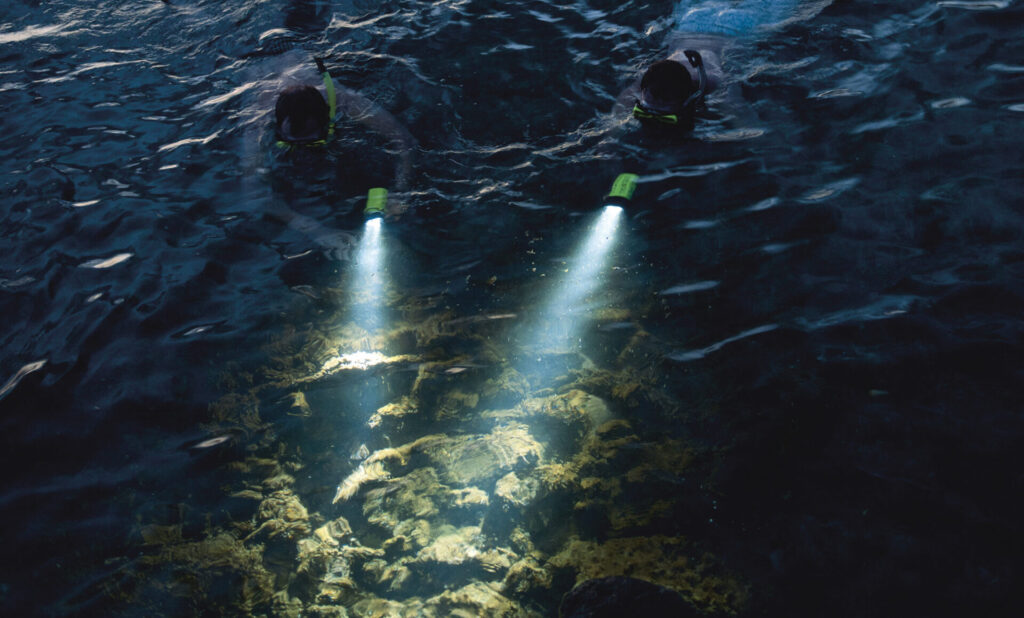 On the leeward side of O‘ahu, I like Ala Moana Regional Park because it’s relatively safe for the novice night snorkeler and offers better snorkeling than people would expect. This is a heavily used beach park during the day, and beachgoers certainly tend to scare the fish away. But when the sun goes down, some of those fish return. Visibility won’t be good—and the swim out to the reef can be spooky through the suspended particles in the water. But at the reef’s edge a hundred yards or so from the shoreline you’ll see lots of shrimp, small fish and crabs, and if you’re observant, octopus. (They are hard to see at night, even when you’re looking right at them.) Park at the part closest to Waikiki, paddle out to the reef, and work your way to the right, slowly, along the inside of the reef. Make a mental note of your position when you start so you can return to the same place. And don’t leave anything valuable in your car for any dirtbags to grab. The park is open until 10 p.m.
On the leeward side of O‘ahu, I like Ala Moana Regional Park because it’s relatively safe for the novice night snorkeler and offers better snorkeling than people would expect. This is a heavily used beach park during the day, and beachgoers certainly tend to scare the fish away. But when the sun goes down, some of those fish return. Visibility won’t be good—and the swim out to the reef can be spooky through the suspended particles in the water. But at the reef’s edge a hundred yards or so from the shoreline you’ll see lots of shrimp, small fish and crabs, and if you’re observant, octopus. (They are hard to see at night, even when you’re looking right at them.) Park at the part closest to Waikiki, paddle out to the reef, and work your way to the right, slowly, along the inside of the reef. Make a mental note of your position when you start so you can return to the same place. And don’t leave anything valuable in your car for any dirtbags to grab. The park is open until 10 p.m.
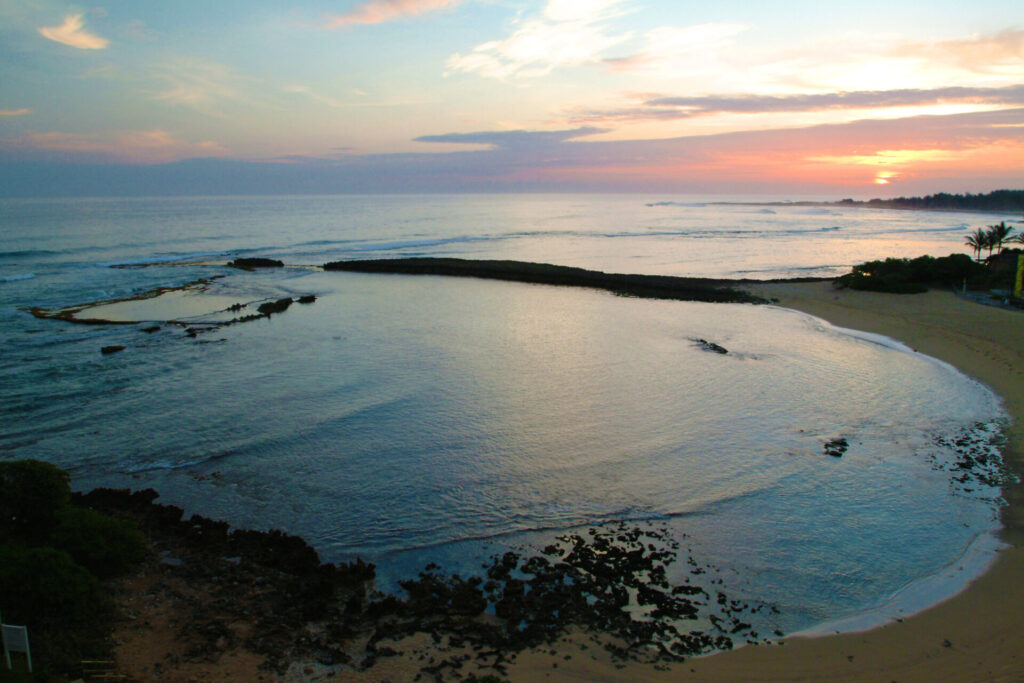
On the North Shore of O‘ahu, your best and safest bet is often Kuilima Cove at the Turtle Bay Resort near the northern tip of the island. The bay is usually fairly well protected. The snorkeling off the middle/right behind the semi-protective reef can be exceptional, even Hanauma Bay-like in terms of fish count. Stay away from the channel at the right end where the reef ends, and avoid the left side where the bay empties into the open ocean. During the day it’s not the best snorkeling you’ll find, but we like it for night snorkeling because as long as you stay on the right side of the cove, you don’t run the risk of getting pounded by the ocean unless seas are raging. And that’s super important when you don’t have daylight to keep you oriented.
Night Snorkeling in Kaua‘i
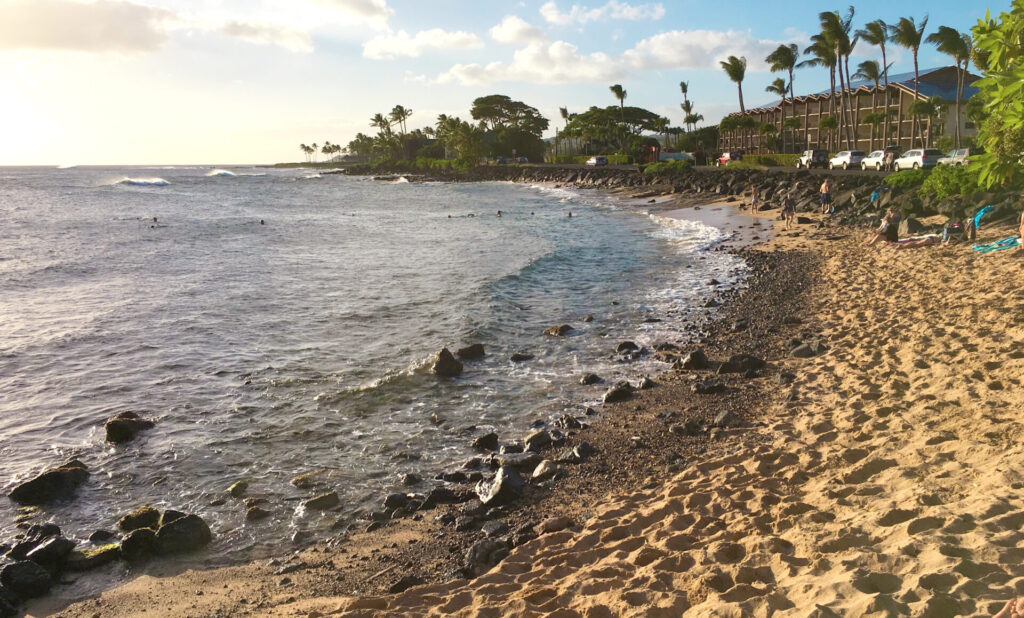 Lawa‘i Beach is a tiny pocket of sand next to the Beach House Restaurant. (The beach is also sometimes just called Beach House.) You’ll be lucky to find sand here since it nearly disappears at high tide. The snorkeling in front of the restaurant is great, but the water is subject to currents during periods of high surf and needs to be respected. At other times it can be calm and a good place for the less-experienced snorkeler. You probably won’t see much sea life during the day since it gets a lot of people splashing around. Once night falls, the shallow water, abundant rocks and coral make this a great place to look for the critters that think the night time is the right time. The far (west) end of the beach is called Keiki Cove, meaning “kid cove”, and has more protection from the open ocean.
Lawa‘i Beach is a tiny pocket of sand next to the Beach House Restaurant. (The beach is also sometimes just called Beach House.) You’ll be lucky to find sand here since it nearly disappears at high tide. The snorkeling in front of the restaurant is great, but the water is subject to currents during periods of high surf and needs to be respected. At other times it can be calm and a good place for the less-experienced snorkeler. You probably won’t see much sea life during the day since it gets a lot of people splashing around. Once night falls, the shallow water, abundant rocks and coral make this a great place to look for the critters that think the night time is the right time. The far (west) end of the beach is called Keiki Cove, meaning “kid cove”, and has more protection from the open ocean.
Night Snorkeling in Maui
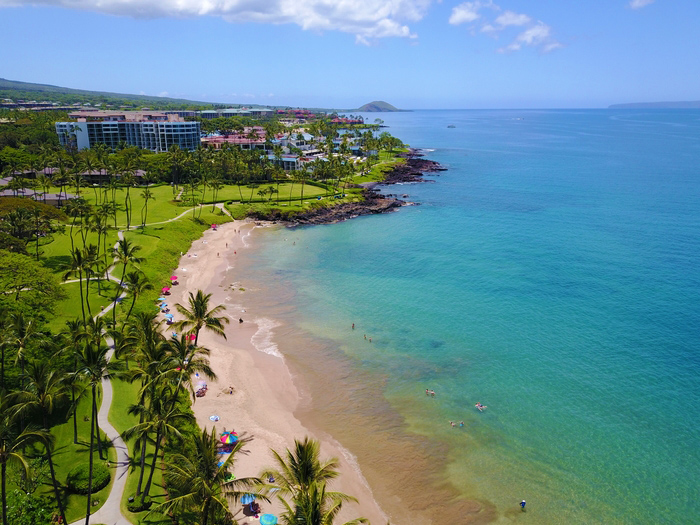 When it comes to night snorkeling on Maui, one of the more popular spots is a two-beach combination—Ulua and Mokapu Beaches. These two beaches are usually spoken of in the same sentence since they share the same parking lot north of the Shops at Wailea. When you take the short path down, the beach on your left is Ulua, on the right is Mokapu. The sand at Ulua doesn’t extend as far offshore as most of the other beaches in the area. We prefer Mokapu during the day for hanging out on the beach; it’s more picturesque, is used a bit less and has slightly clearer water. Ulua is a popular dive spot. Though a tad overdived since it’s the go-to spot for shore and introductory dives, it’s nice with a lot of coral. During the day, it’s crowded, and the visibility is often poor. It’s also the go-to spot for night dives. If you’re looking to try some night snorkeling, knowing there are other groups in the water can help if you’re feeling out of your comfort zone. (An easy feeling to have when you’re swimming in the dark.)
When it comes to night snorkeling on Maui, one of the more popular spots is a two-beach combination—Ulua and Mokapu Beaches. These two beaches are usually spoken of in the same sentence since they share the same parking lot north of the Shops at Wailea. When you take the short path down, the beach on your left is Ulua, on the right is Mokapu. The sand at Ulua doesn’t extend as far offshore as most of the other beaches in the area. We prefer Mokapu during the day for hanging out on the beach; it’s more picturesque, is used a bit less and has slightly clearer water. Ulua is a popular dive spot. Though a tad overdived since it’s the go-to spot for shore and introductory dives, it’s nice with a lot of coral. During the day, it’s crowded, and the visibility is often poor. It’s also the go-to spot for night dives. If you’re looking to try some night snorkeling, knowing there are other groups in the water can help if you’re feeling out of your comfort zone. (An easy feeling to have when you’re swimming in the dark.)
Night Snorkeling in Big Island
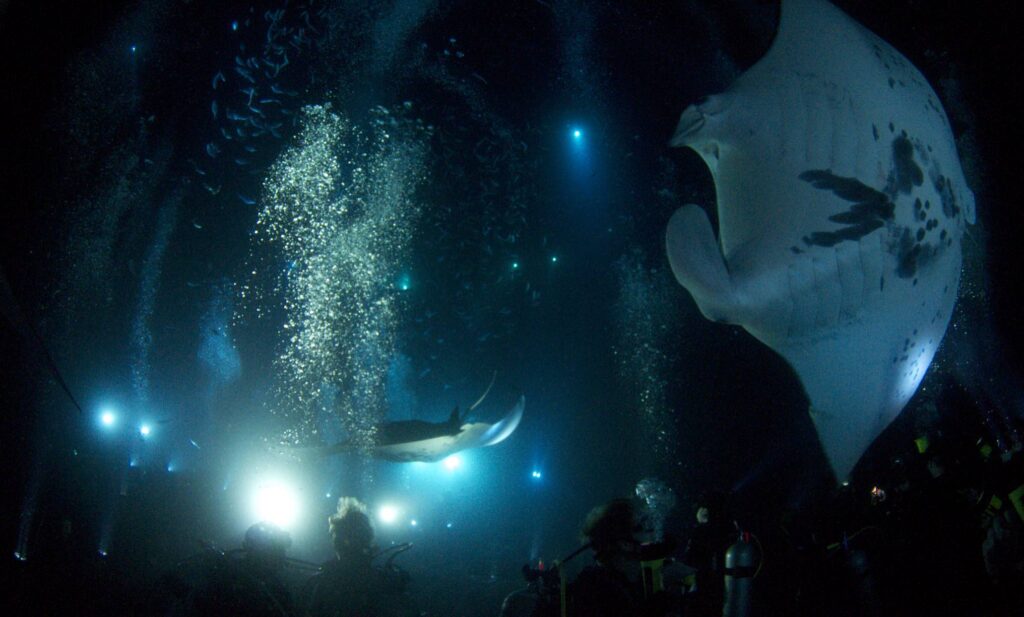 I saved the best for last—night snorkeling with manta rays. Though not as adventurous as a night manta SCUBA, this has become a big attraction on the Big Island. Lots of companies will take you out to snorkel with the mantas. You have three options: You can swim out on your own. (From the back of Keauhou Bay it’s 0.25 miles each way unless you take a shortcut through the Sheraton.)
I saved the best for last—night snorkeling with manta rays. Though not as adventurous as a night manta SCUBA, this has become a big attraction on the Big Island. Lots of companies will take you out to snorkel with the mantas. You have three options: You can swim out on your own. (From the back of Keauhou Bay it’s 0.25 miles each way unless you take a shortcut through the Sheraton.)
If you’re unsure of swimming that far, you can take a boat out to the snorkel site. If you go on a SCUBA boat, you’ll probably go to the airport manta site. You’ll get a good briefing on mantas and get more freedom of movement, but as a snorkeler you’re a tag-along. You’ll be out there for hours while the divers complete two dives. Both Big Island Divers and Jack’s Diving Locker do a good job. You can also take a larger snorkel boat, such as Hula Kai for the 2-minute ride to the Sheraton site. The 1.5-hour experience includes hot drinks, warm soup and a cash bar. Sea Paradise does this in a smaller boat for a little less money.
There you have it. Some of my favorite spots to check out the underwater world at night. While night snorkeling is admittedly on the adventurous side, I cover just about everything you can do in Hawaii in my guides. From the tame and kid-friendly activities to the strenuous adventures that take lots of preparation, my believable guides will help you have an unbelievable vacation.
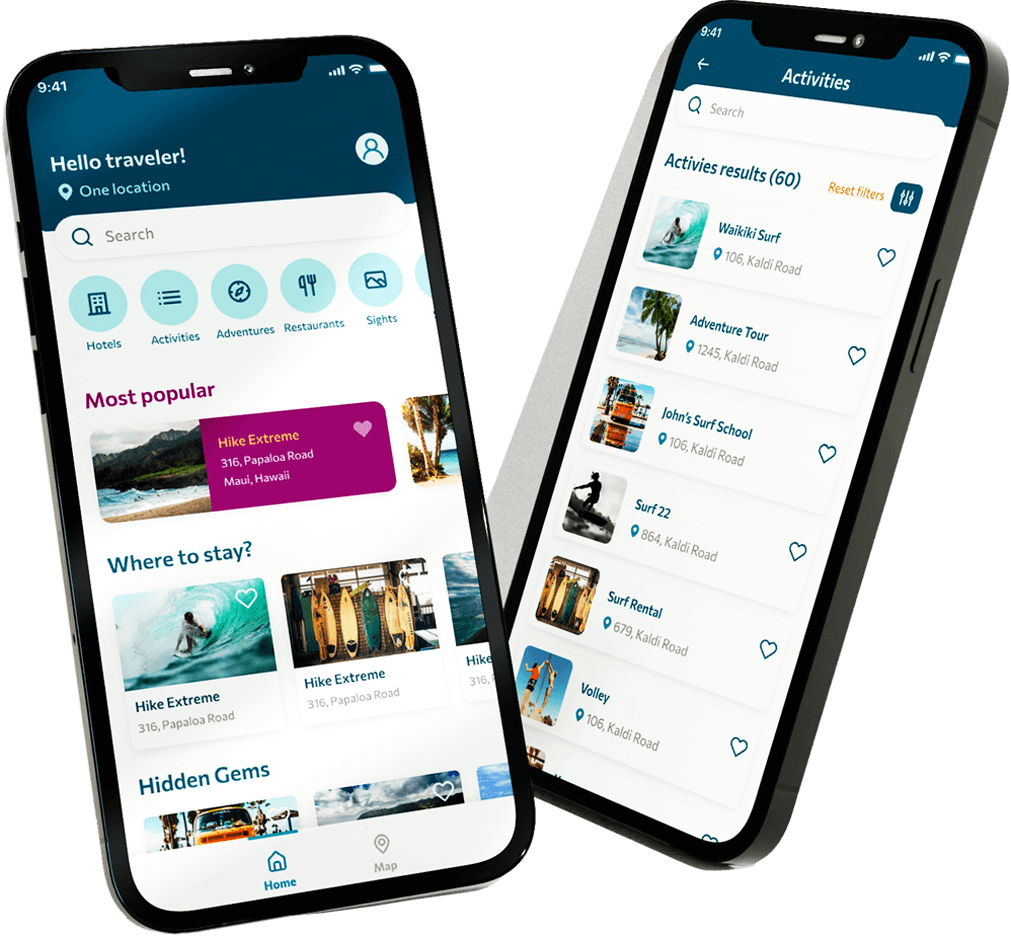



0 Comments